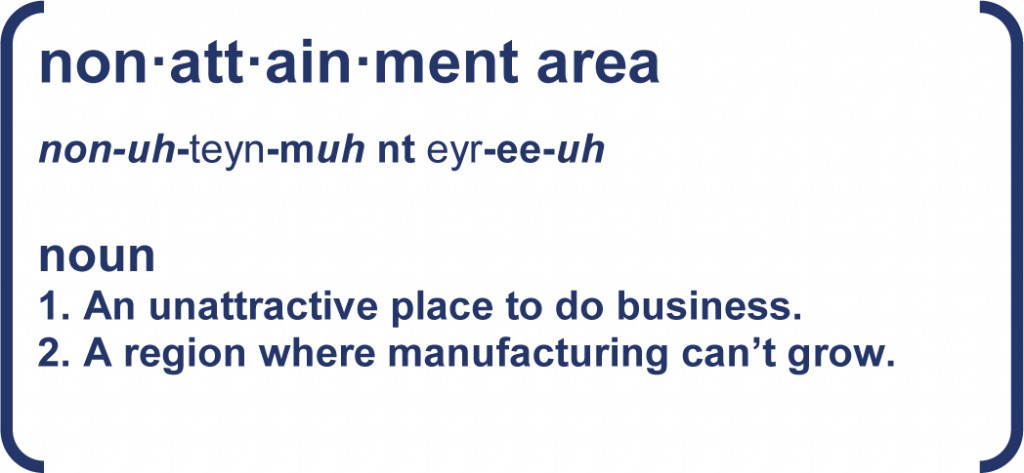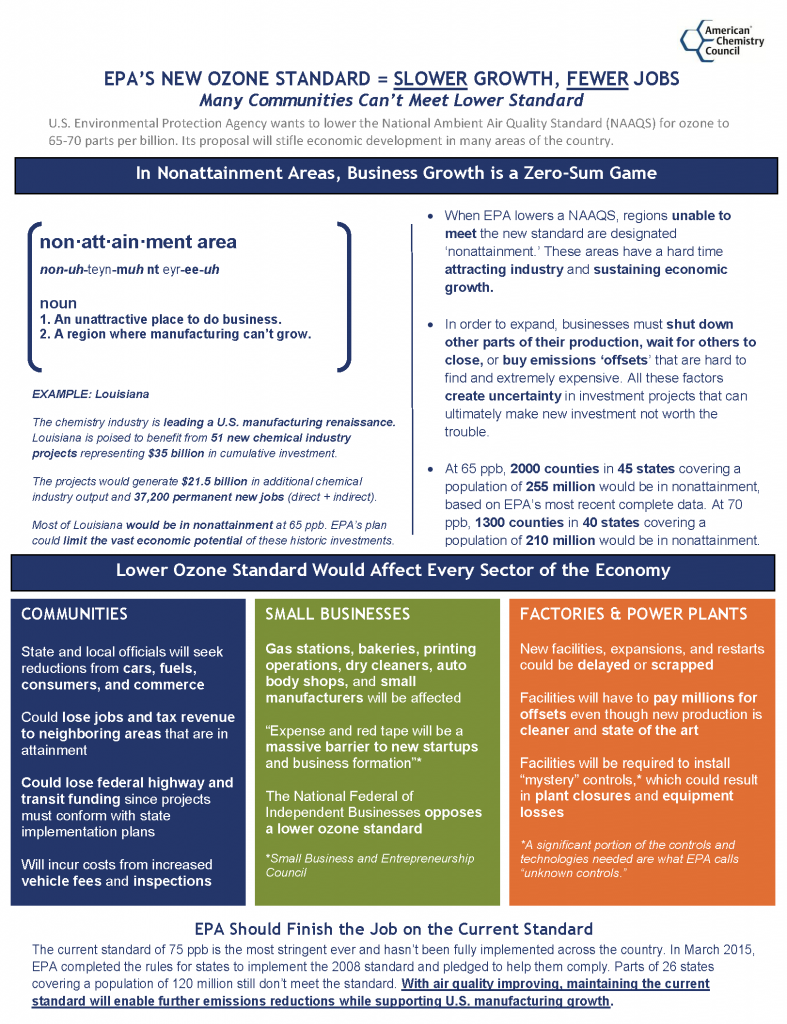As we approach EPA’s March 17 deadline for comments on its proposal lowering the National Ambient Air Quality Standard (NAAQS) for ozone, Americans should be fully informed of the impacts. In many communities, the answer is simple: Fewer jobs, slower growth.
Perhaps the real-world consequences of EPA’s plan are hidden behind confusing terminology. In EPA-speak, regions that can’t meet a new, lower NAAQS are called ‘nonattainment areas.’ In plain English, these are places where it will be harder to attract industry and sustain economic growth.
Here’s why. In nonattainment areas, total emissions are capped. Business growth becomes a zero-sum game: In order to expand, companies must shut down other parts of their production, wait for others to close, or buy emissions ‘offsets’ that are difficult to find and extremely expensive. All these factors create uncertainty in investment projects that can ultimately make new investment not worth the trouble.
Take Louisiana for example. It’s poised to benefit from an influx of new investment projects – the start of a U.S. manufacturing renaissance led by the chemistry industry and made possible by shale gas. So far, 51 projects representing $35 billion in new investment are planned for the state. The projects would generate $21.5 billion in additional chemical industry output and 37,200 permanent new jobs (direct + indirect). Most of Louisiana would be in nonattainment at 65 ppb. By lowering the NAAQS, EPA could limit the vast economic potential of these historic investments.
Lower ozone standard would affect every sector of the economy
Being designated ‘nonattainment’ triggers a cascade of harmful impacts for local economies. As state and local officials seek emissions reductions from cars, fuels, consumers, and commercial activity, nonattainment areas could lose jobs and tax revenue to neighboring locales that are in attainment. Federal highway and transit funding could be at risk, since projects must conform with state implementation plans. Small businesses such as gas stations, bakeries, printing operations, dry cleaners, auto body shops and small manufacturers will be affected.
Expense and red tape will be a massive barrier to new startups and business formation. - Small Business and Entrepreneurship Council
Expense and red tape will be a massive barrier to new startups and business formation. - Small Business and Entrepreneurship Council
For factories and power plants, a lower ozone standard means new facilities, expansions, and restarts could be delayed or scrapped. Facilities that do expand will have to pay millions for offsets even though their new production is cleaner and state of the art. And they still don’t know the requirements for their facilities: EPA has admitted that a significant portion of the controls and technologies needed are “unknown controls.”
EPA’s plan is hardly the way to support shale-related manufacturing. In his 2014 State of the Union Address, the President said, “Businesses plan to invest almost $100 billion in new factories that use natural gas. I’ll cut red tape to help states get those factories built.”
Some of the potential consequences defy common sense. There could be increased costs from vehicle fees and expenses. In regions that have already implemented emissions controls, “the only options left are mandates like cutting speed limits to 55 mph and/or preventing cars from idling by closing down drive-thru restaurants,” Congressman Pete Olson wrote.
The effects of EPA’s lower ozone standard could be coming to a community near you. At 65 ppb, which is at the lower end of the range EPA proposed, 2000 counties in 45 states covering a population of 255 million would be in nonattainment, based on EPA’s most recent complete air quality data. At 70 ppb, 1300 counties in 40 states covering a population of 210 million would be in nonattainment.
EPA should finish the job on the current standard
America’s air quality is improving. Between 1980 and 2013, total emissions of the six principal air pollutants dropped by 62 percent, even as U.S. gross domestic product grew 145 percent. Voluntary and regulatory programs will continue to reduce ozone concentrations through 2030.
The current ozone standard of 75 ppb is the most stringent ever and hasn’t been fully implemented across the country, and the full extent of the benefits in terms of emissions reductions aren’t known yet. EPA just completed the rules for states to implement 2008’s standard and pledged to help them comply. They have their work cut out for them: Parts of 26 states covering a population of 120 million still don’t meet the current standard.
Maintaining the current standard will enable further emissions reductions while supporting U.S. manufacturing growth.
Download infographic pdf.







